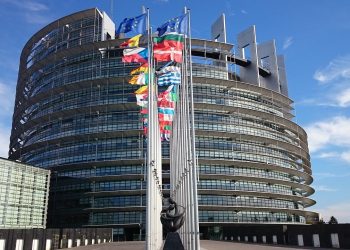Sustainable land management is key to combatting biodiversity loss as a result of human activities. To investigate the relationship between EU consumption and land use, the JRC, in collaboration with Eurostat, developed a model providing annual estimates of the EU’s land footprint (i.e. the area of land needed to produce the products we consume).
The model considers three types of land: cropland, grassland, and forest land (used to produce timber products). It accounts for the land used domestically in the EU and the land used outside the EU to grow imported products. To model the trade component, more than 500 food and bio-based products were analysed individually. The model re-elaborates trade data to correctly assign an imported product to the country where agricultural or forest land was used to produce it. For example, the cropland embedded in EU imports of chocolate from Switzerland and consumed in the EU is assigned to the countries where the cocoa was originally cultivated.
How much land is needed to sustain EU consumption?
The model estimates that from 2014 to 2021, the EU was a net importer of cropland (used to grow products consumed in the EU) and a net exporter of grassland (used to grow products consumed outside the EU). For forest land, the net trade fluctuates annually: imports and exports are in the same range; some years the former are larger, others the latter.
In 2021, the EU imported a cropland of 50 million hectares (ha) – roughly the size of Spain – and exported a cropland of 28 million ha (about half of the imports). Its domestic cropland use (measured in terms of harvested area) was equal to 94 million ha (Table 1). The main countries from which the EU imported cropland were Argentina, Brazil, and Ukraine (Table 2). The main goods produced on these croplands were vegetable oils (e.g. palm oil and sunflower seed oil), oil seed crops (e.g. rapeseed and soybeans), and residues of food industries, such as oilcakes (mostly to be used as animal feed).
The model estimates that the average EU citizen used 0.26 ha of cropland in 2021 to meet their annual consumption needs for food and other bio-based products (e.g. livestock, oils, or cotton). For comparison, the average global citizen used around 0.19 ha in the same year.
In 2021, the EU’s use of cropland was also slightly above the limit of 0.25 ha of cropland per global citizen, set by the Planetary Boundaries framework. This limit was set to avoid the risk of irreversible damage to the planet.
How are the results of the model used?
The land footprint estimates are available in Eurostat’s online database, and enrich the Eurostat portfolio of statistics and accounts on the environment. In addition, they help provide insights into the drivers, pressures, and impacts of our societies on the environment. Eurostat further uses the land footprint estimates to monitor the EU’s progress towards the Sustainable Development Goals, and to estimate the spillover effects of EU consumption.
This model will also be used in combination with other models currently being developed by the JRC in the context of deforestation. These new models will assess the potential deforestation caused by selected imported goods, and monitor the potential deforestation caused by the EU food system.
Furthermore, the model can help identify strategies to reduce the environmental impact of EU consumption, such as increased circularity and efficiency of supply chains, reduced food waste, and dietary shifts.
Related links
JRC technical report on the model
Eurostat report on “Sustainable development in the European Union
O artigo foi publicado originalmente em JRC.




















































